So, you’re intrigued by the idea of selling clothes online? Whether you’re looking to tidy up your closet for extra cash or toying with launching a full-scale online boutique, we’ll help you find the best place to sell clothes online.
The Marie Kondo decluttering movement inspired some to sell unwanted items that no longer sparked joy. These side hustles uncovered an untapped commercial potential for selling fashion items in digital marketplaces.
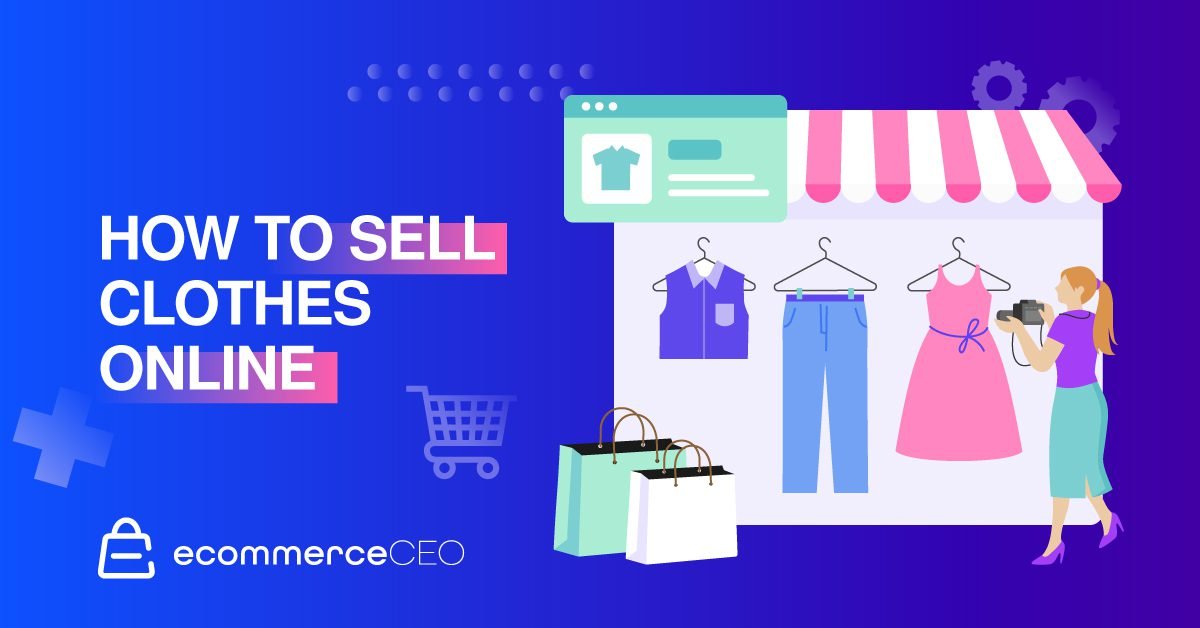
In the United States, the clothing sector accounts for over 20% of the ecommerce industry. This market segment has enjoyed consistent growth year-on-year with no end in sight.
By 2027, we expect the secondhand apparel market to reach US 351 billion dollars. The buying and selling resale clothes online is largely driven by people born after the 90s. 42% of millennials and Gen Z will likely shop for secondhand clothes. We’ve now hit the era of generation exchange.
We’ll help you pinpoint the best places to sell your preloved apparel online. Remember, your old clothes might just be someone else’s new favorite outfit!
Read on for a full list of seller fees for each site and get a step-by-step guide on how to sell clothes online.
ASOS Marketplace
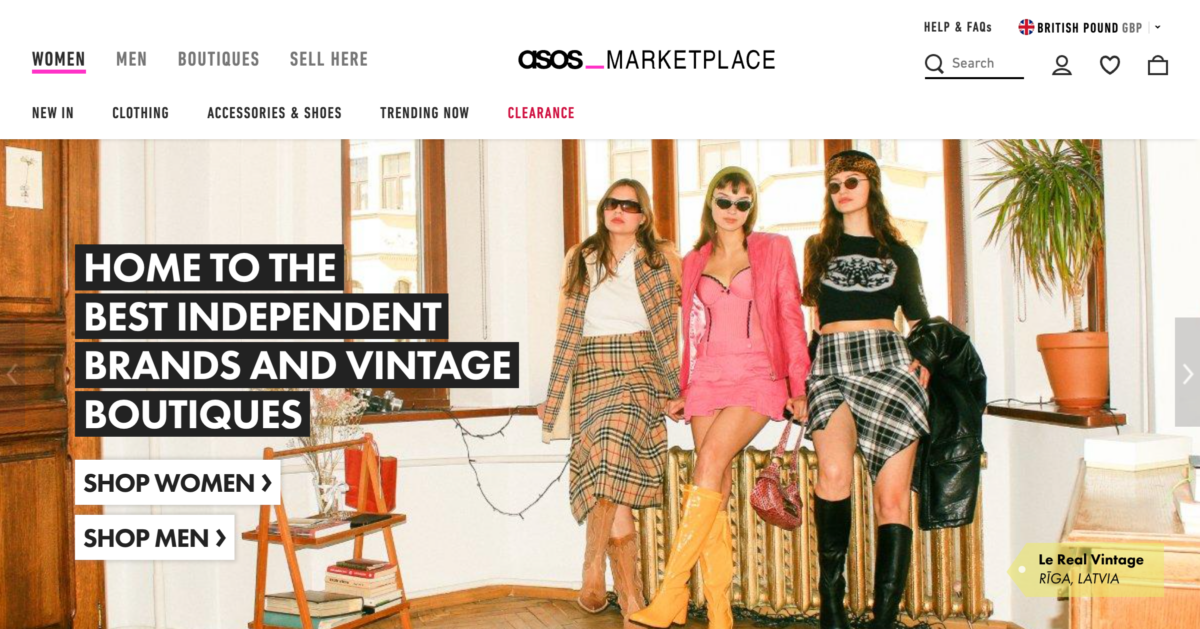
ASOS is a collection of one thousand independent labels and vintage clothing boutiques. It offers highly curated items to an international audience.
The bar for acceptance on this platform is significantly higher. Sellers must have a trendy boutique to maximize this opportunity.
To get your items onto the site, you need to apply. However, they’re not always taking applications.
Poshmark
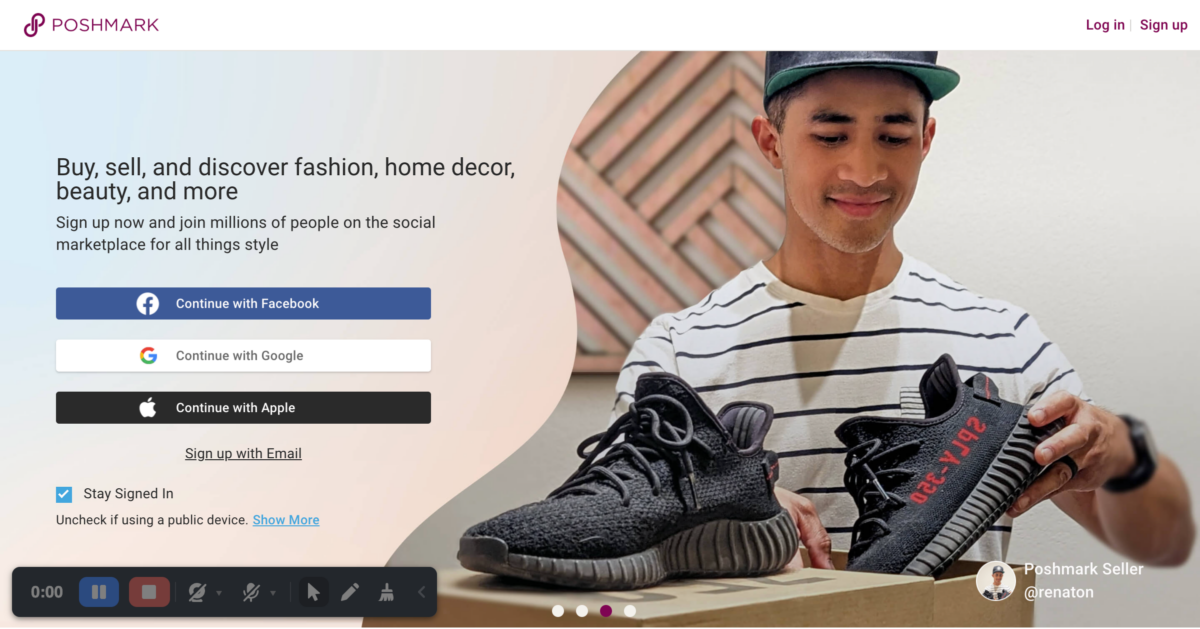
Poshmark is a social media marketplace for new and secondhand fashion. Through an app, you’re connected with a community of people who follow your wardrobe and leave comments.
You can attend four themed daily events called Posh Parties to market your clothing line. Potential buyers make ‘offers’ on your listings, where you can counter or accept. To enhance the appeal of your items, set discounts or reduce shipping costs for those who have ‘liked’ your clothes.
You’ll receive a prepaid and addressed label once you’ve made a sale on Poshmark. With this feature, you can package and post your stuff hassle-free.
Vestiaire Collective
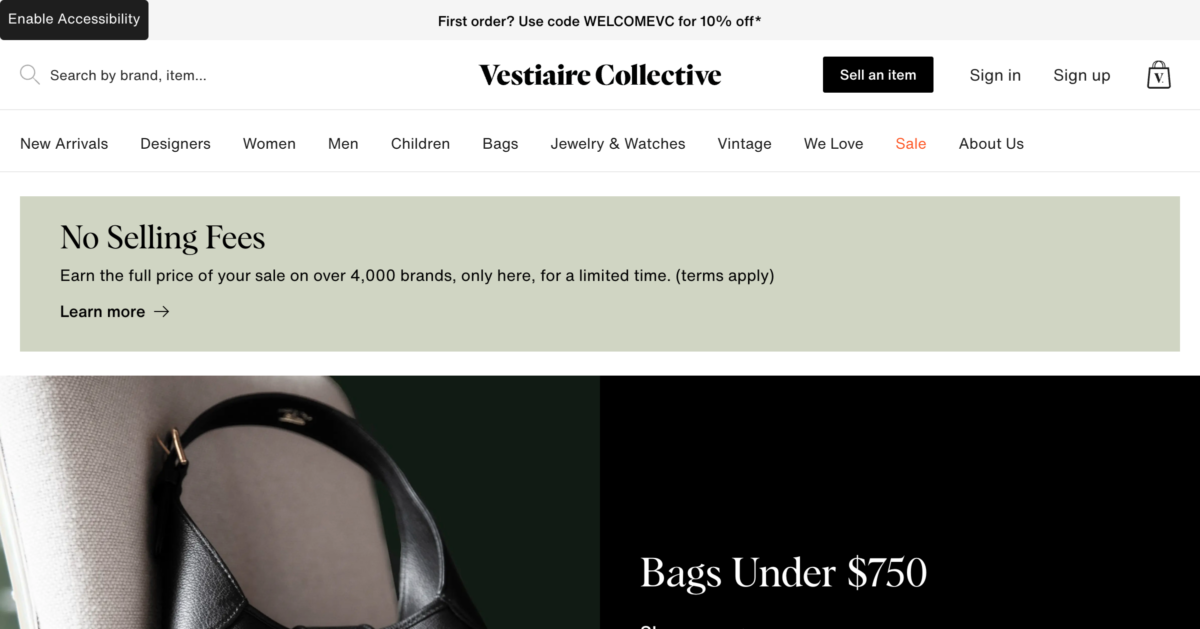
If you’re focused on offering high-end and luxury clothing items, Vestiaire Collective should be your go-to platform. This online marketplace is an international community, giving your products the potential to reach a global audience. Quality control is a key concern for this platform, as they carefully handle designer and luxury goods.
Before your item goes live on the marketplace, it undergoes a strict quality check by in-house experts. Upon approval, your pieces are uploaded to the site and accessible to shoppers from all over. Moreover, an intriguing aspect of this platform is that it also allows selling watches and jewelry.
While your items may take a bit longer to sell, considering the high-price bracket, the return on investment is worth the wait.
Depop
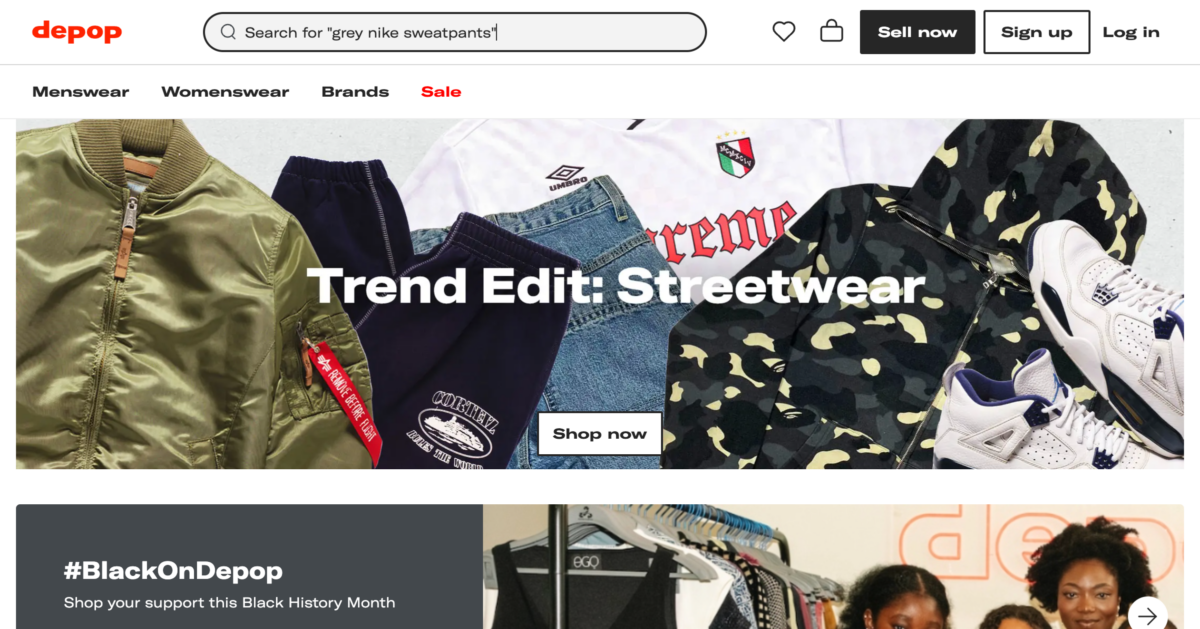
Depop is a global online marketplace focusing on fashion resale and social inspiration. You can sell pieces from your closet or set up your shop page.
Get inspired by the latest trends by viewing what others are wearing. This will help you target a niche audience and build your followers.
If you want to restore the planet, consider Depop a potential fit. They have a mission to promote sustainability by keeping clothes out of landfills.
eBay
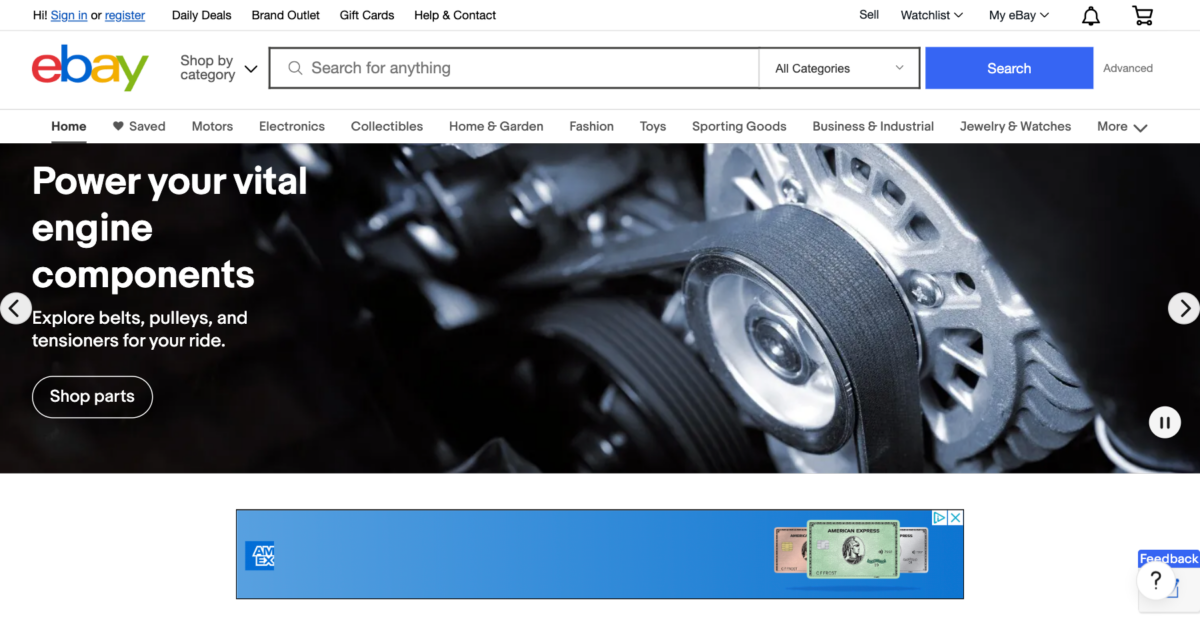
eBay should not be overlooked. It’s still a popular space for especially rare or one-of-a-kind products. It has a large, global reach with an active audience.
For everyday items, this is a dependable way to make sales. Just beware of competitive pricing and seller fees. Learn how To Sell On eBay.
Etsy

Etsy is a well-known digital hub for handmade goods. Though you might assume that selling items on this platform requires crafting everything from scratch, that’s not necessarily the case. You’re more than welcome to source pre-existing clothing items and make tasteful modifications to their original designs.
This way, you’re able to add a personal touch without having to dive headfirst into prototyping, manufacturing, and the other detailed processes typically involved with creating a product from scratch.
You might want to check out this article, Amazon Handmade vs Etsy, for a more detailed comparison between Etsy and other platforms.
Facebook Marketplace

Facebook Marketplace has overtaken Craigslist as the best method to make local sales online. It inherently has a huge customer base thanks to the billions of Facebook accounts. Platform users shop with only a few clicks.
Selling on Facebook is a convenient way to exchange gently used or brand-new items from your closet. You can even ship inter-state and globally, so you don’t need to rely on a local consumer base.
Mercari
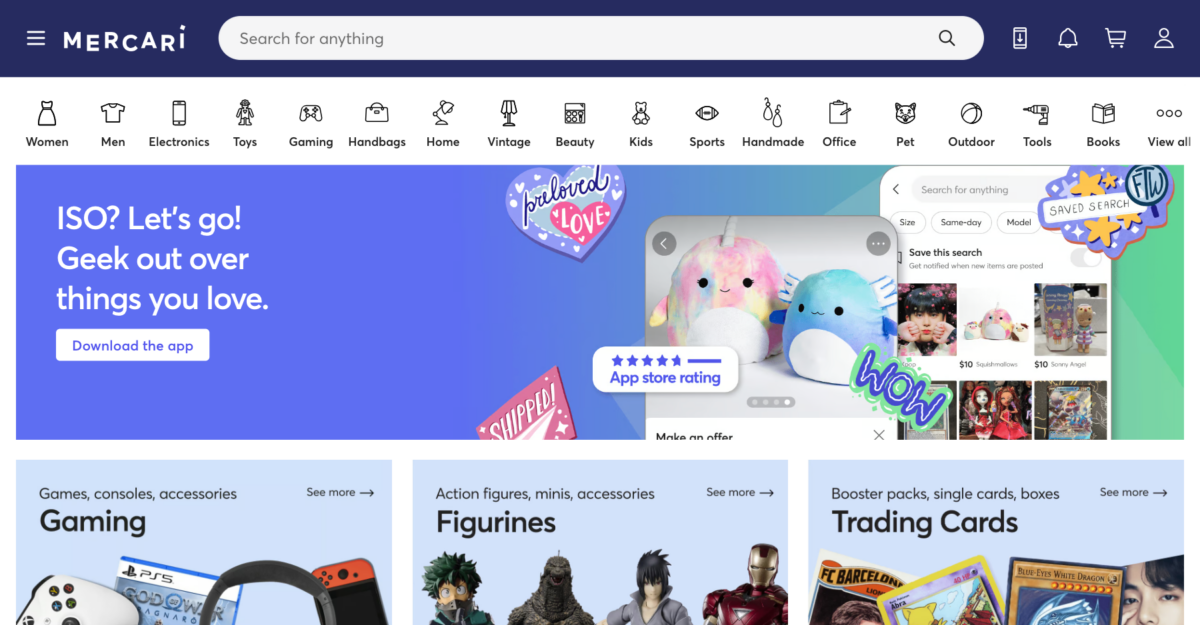
Mercari is an app-based marketplace catering to various product categories, including clothes for both men and women and a wide selection of handbags. Sellers add over 350,000 items every day, making for a pool of constantly updated styles and trends.
Listing on Mercari costs you nothing. You’re only charged once a sale is complete. This feature simplifies selling items online, making it an affordable and effortless platform for disposing of clothes and accessories, such as handbags, that are no longer needed.
Set the right price by searching for similar pieces and reviewing their sold prices. When a shopper presents an offer, you can message them privately and start the negotiations.
Once you’ve shipped to your buyer, they have three days to confirm the clothes are as specified. Once confirmed, you give them a rating, and they inject the money into your account.
Rebag

Rebag is another ecommerce store that authenticates designer goods to weed out knock-offs. They also have the Clair AI, which can instantly give you the value of an item from a picture and simple details. Use this tool to assess your product and make an informed decision before sending it.
This is another good option for holding onto designer brands like Gucci and Prada.
For eligible clothes and accessories, payouts are between 3% and 80% of the selling price. The calculation is based on various factors, including brand, style, condition, size, and salability.
To speed up the process of receiving a label for your clothes, Rebag has joined forces with thredUP. Thanks to this partnership, you get credit if you sell items outside of the guidelines. To know what type of compensation you’ll receive, check out their inventory of ineligible brands for payouts.
Style Alert

Style Alert combines a personalized styling service with pre-owned, high-end products. To know what to sell, review their list of brands.
To make the process easier, request a free Trade-In Kit. If they approve your items, you’ll get an offer for a payout. If not, you must pay a fee for return shipping or donation. Remember this before sending anything.
The RealReal
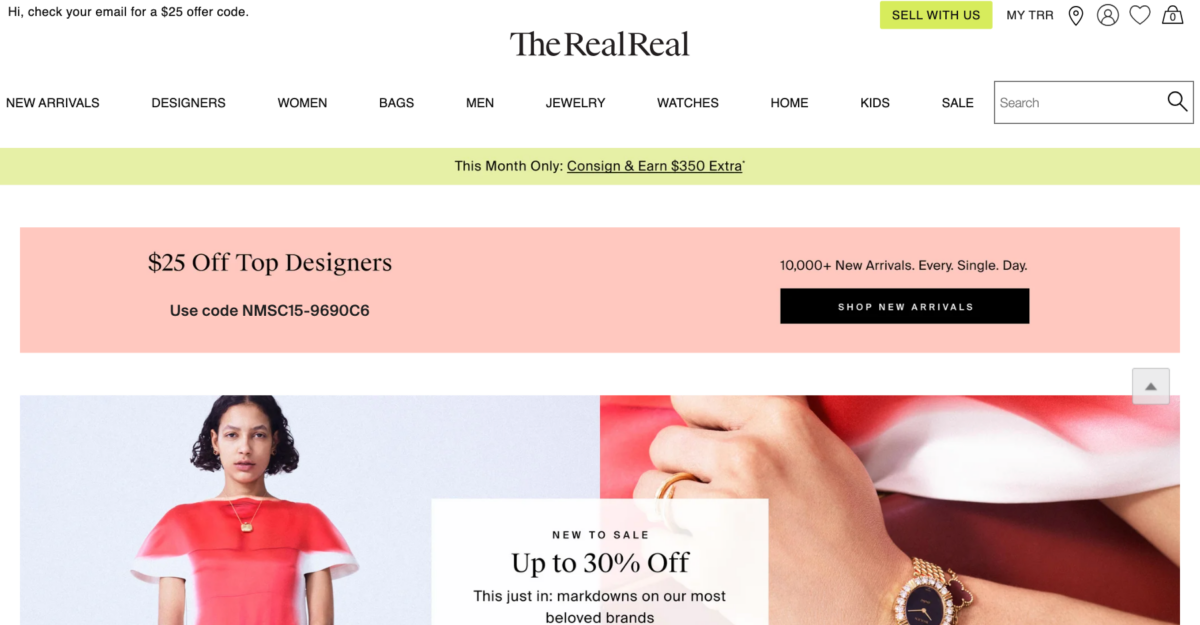
The RealReal is an option for high-end designer items like Chanel and Louis Vuitton. Having experts to authenticate items is the advantage of this marketplace. This way, they can guarantee that they don’t sell any knock-offs. This is important for prospective buyers but also benefits sellers. When a platform sells fakes, it brings down the entire sales price.
This trusted retailer is perfect for designer clothing or bags collecting dust.
ThredUP

ThredUP is an online consignment and thrift store with a strong focus on sustainable fashion. This company is among those leading the charge towards a more sustainable future.
Taking an active part in changing the horrifying fact that 73% of used apparel is sent to landfill or incinerated. It’s an unfortunate truth, but the reality is that 95% of clothes could be reused or recycled, making a case for the importance of evolving towards sustainable fashion practices.
With ThredUp, they have built one of the largest platforms for women’s and kids’ secondhand attire. They host over 55,000 brands with up to 90% off estimated retail prices.
To make an impact and lighten your workload, explore their marketplace. They offer a unique experience, where once they receive your clothes, they inspect, photograph, and list them for sale.
They may pay you up-front for in-demand items or through online consignment for slower sellers. They will also likely deem not all of your stuff sellable based on style and condition.
For unwanted garments, like old clothes, you must pay return shipping to get them back. Otherwise, you can opt for the company to recycle them for you.
Be cautious; they only accept 40-50% of what’s sent to them. They’re honest about this as they want to maintain the integrity of their store. To send your clothes, order a Clean Out Kit, which includes prepaid shipping.
VarageSale

VarageSale is specifically designed to promote local transactions, fostering a community atmosphere. This means you’ll largely be dealing with local buyers, which can prove safer and reduce the headaches associated with shipping. Plus, the platform implements a member-only policy, further enhancing the safety and trust within the community.
The platform is quite easy to navigate and use. The user-friendly layout allows you to create appealing listings for your products in just a few minutes. Pictures, descriptions, and prices are all easy to input, making VarageSale a stress-free platform for your online sales.
One unique feature that sets VarageSale apart is the ability to organize your items into categorized albums—perfect for keeping similar items together. This helps potential buyers easily find what they are looking for, increasing the likelihood of your clothes being sold.
Vinted
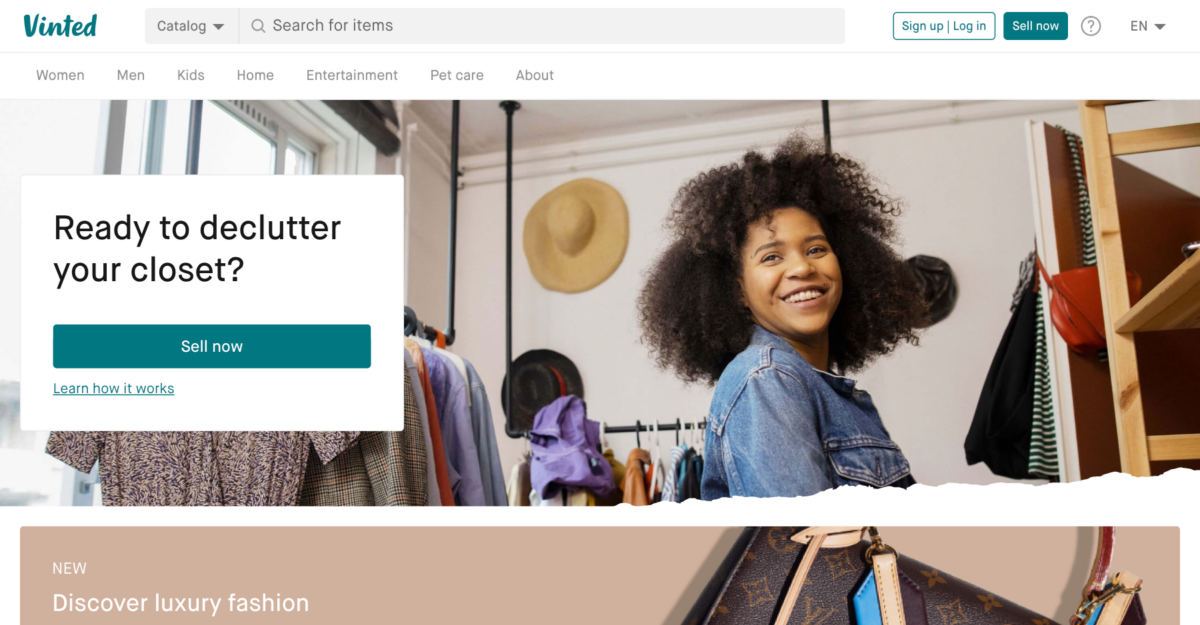
Vinted is a clothing app that boasts zero fees for buying and selling pre-owned apparel. You can add items for free and collect a prepaid label when they sell. This method eliminates the processing fee and sends you money once delivery is confirmed.
Customers cover the shipping rate and other fees, making this a great seller platform.
Your Online Store

Crafting a place entirely your own to sell your clothes online is also a worthy consideration. Platforms such as Shopify, BigCommerce, Wix, and WooCommerce allow you to create an online store unique to your style and brand.
Not only can you sell your used clothes through this platform, but there’s also the opportunity to expand into selling new print-on-demand clothes. This path requires a bit more work upfront, but its freedom is unparalleled. Once your store is live, you’re not limited to traffic from these ecommerce giants.
You can easily capitalize on the power of social media – Pinterest, Instagram, and Facebook become your playgrounds. You’re free to advertise and sell your used or print-on-demand clothes to a broader audience, unconfined by the rules of a third-party platform, potentially making your online business even more profitable.
Ready To Sell Clothes Online?
The online fashion industry is worth about 775 billion dollars and growing. Selling clothes from your wardrobe or as a side hustle can be profitable. Many have gotten their feet wet marketing clothing online through Poshmark or a direct sales company. After dipping in their toes, they then launched their ecommerce boutique.
The beauty of ecommerce is the relatively low barrier to entry. Getting started can be as easy as acquiring a small stock of items and posting them on your preferred platform. With popular items, well-built product pages, and the right prices, you should be able to earn some profit. You can then reinvest your earnings to order new stock and repeat the process. Before long, you’ll have a small business going!
With a more considerable investment, you could create your website and order as much stock as you desire. Eventually, you will need to form an actual business entity. But to get started, all it takes is a few products, a good strategy, and a bit of elbow grease.









